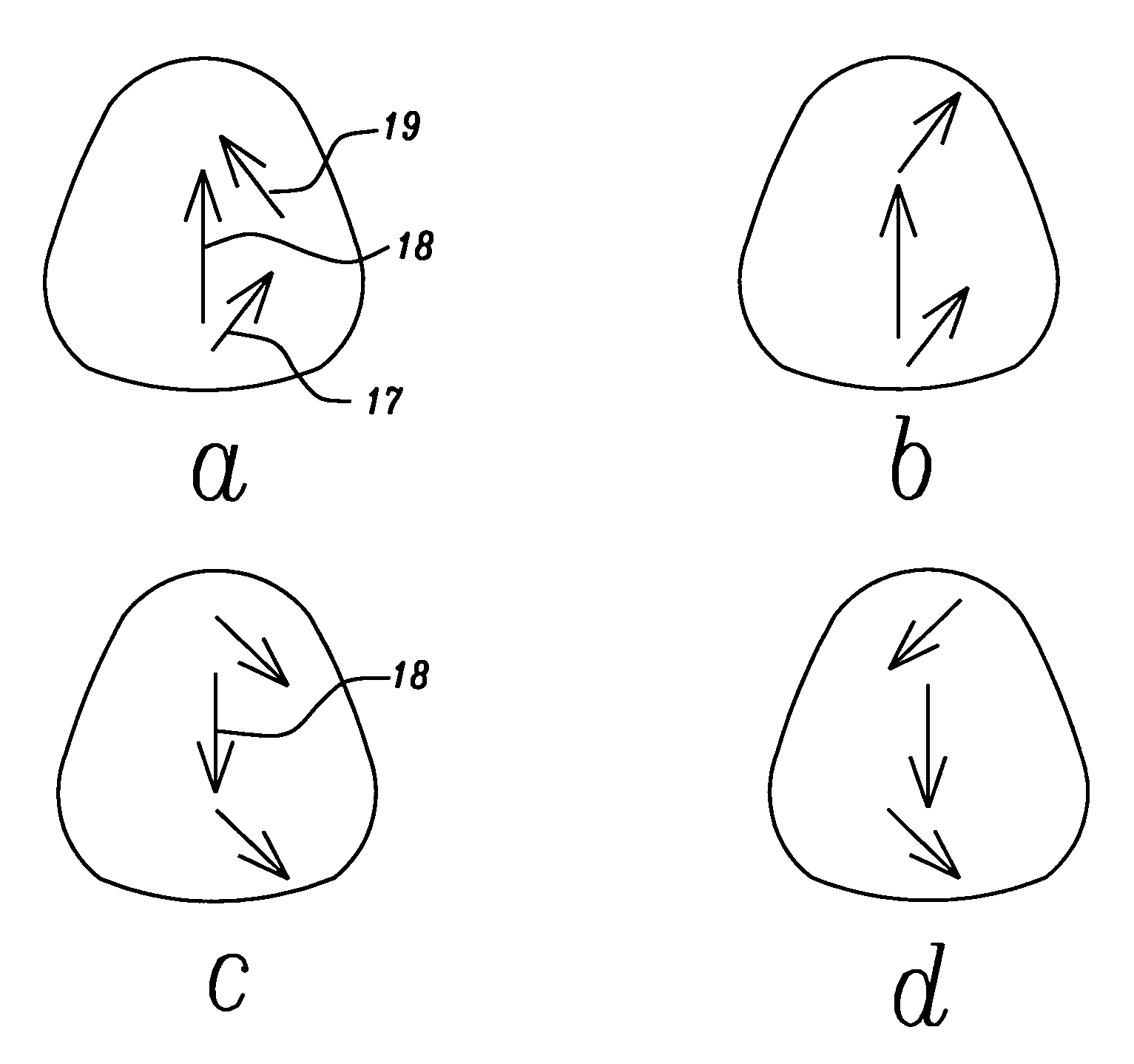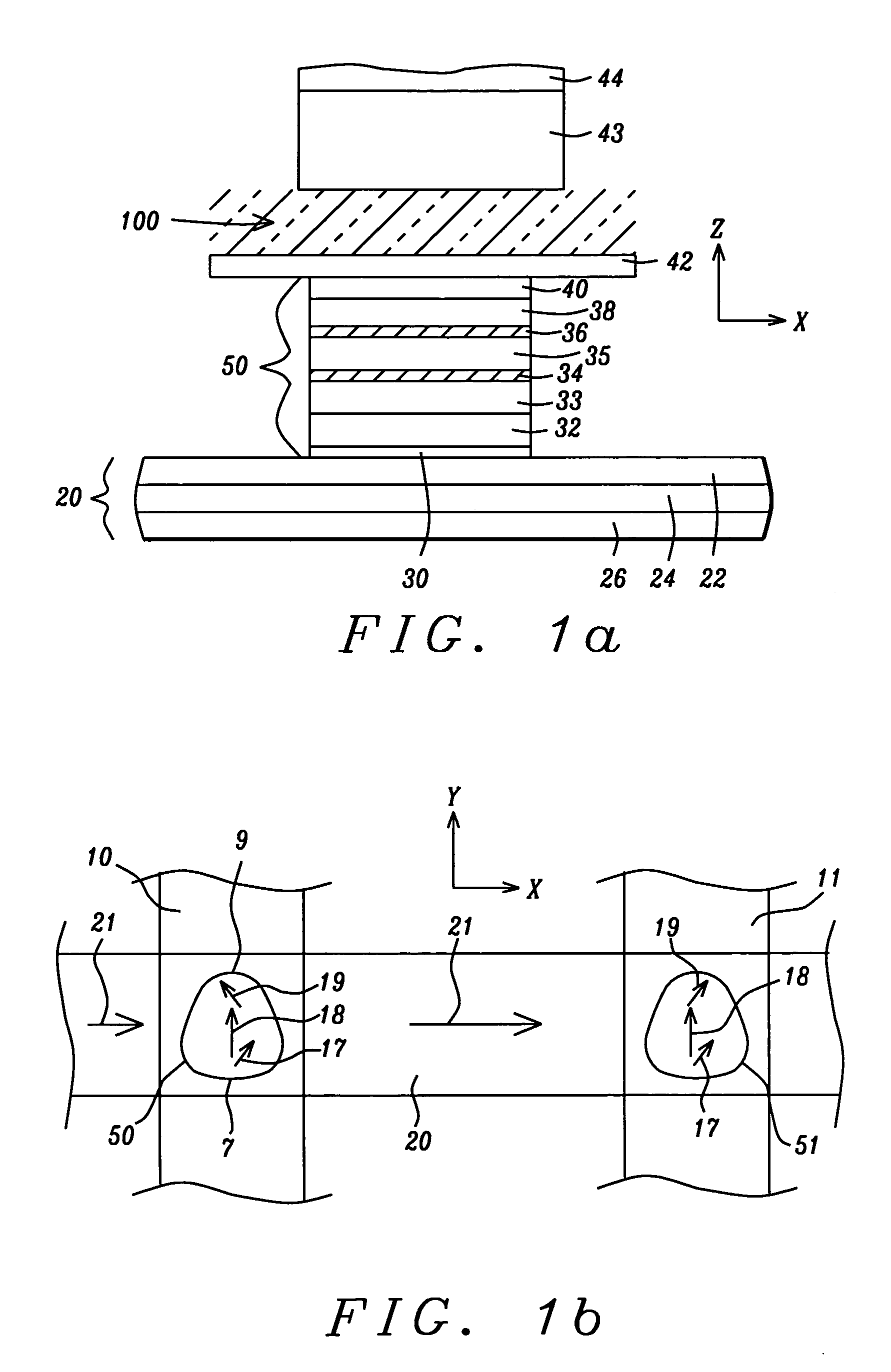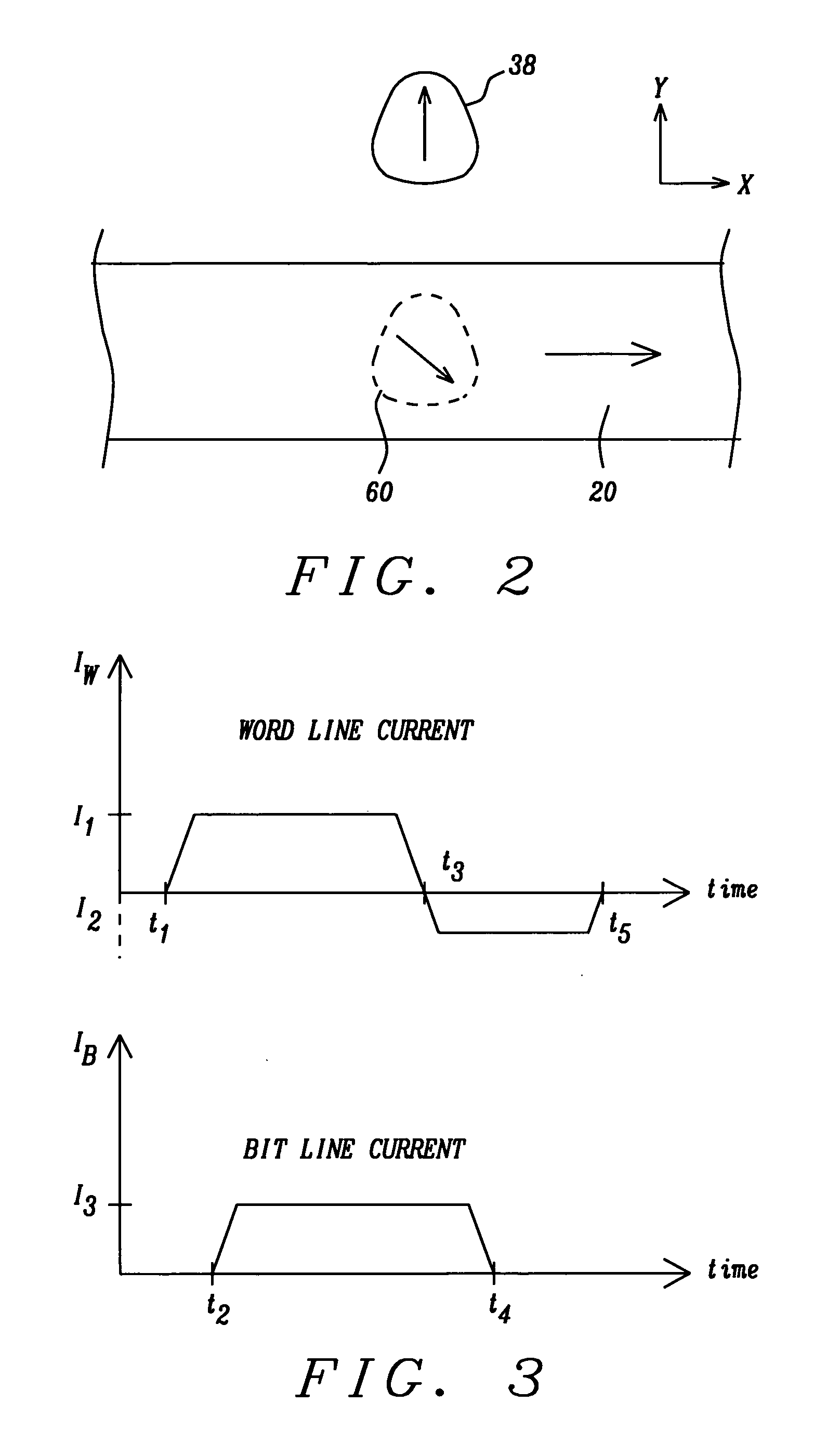Magnetic random access memory array with free layer locking mechanism
a random access memory and free layer locking technology, applied in the direction of digital storage, instruments, semiconductor devices, etc., can solve the problems of increasing the size of the switching field, bringing with it its own problems, and causing significant problems, so as to increase the magnetic field, increase the permeability, and the effect of increasing the magnetic field
- Summary
- Abstract
- Description
- Claims
- Application Information
AI Technical Summary
Benefits of technology
Problems solved by technology
Method used
Image
Examples
Embodiment Construction
[0040]The preferred embodiment of the present invention provides an MTJ MRAM cell and its method of use, or an MRAM array of such cells, in which the required switching current in the bit line can be reduced, the bit state of the cell rendered thermally stable between writing and rewriting and the cells can be locked or unlocked in accordance with whether or not they have been selected to be written upon, all by the addition of a thin adjacent soft magnetic layer formed on the bit line which couples magnetostatically to a proximal free layer of the MTJ cell. The preferred embodiment also teaches a sequence of word and bit line currents that rewrite the MTJ MRAM cells in accord with the objects of the invention.
[0041]Referring back to FIG. 1a there is shown in a schematic vertical cross-sectional view (in the xz-plane) the general configuration of the MRAM cell of the present invention. The MTJ element (50), which can have a horizontal cross-sectional shape to provide a magnetic anis...
PUM
 Login to View More
Login to View More Abstract
Description
Claims
Application Information
 Login to View More
Login to View More - R&D
- Intellectual Property
- Life Sciences
- Materials
- Tech Scout
- Unparalleled Data Quality
- Higher Quality Content
- 60% Fewer Hallucinations
Browse by: Latest US Patents, China's latest patents, Technical Efficacy Thesaurus, Application Domain, Technology Topic, Popular Technical Reports.
© 2025 PatSnap. All rights reserved.Legal|Privacy policy|Modern Slavery Act Transparency Statement|Sitemap|About US| Contact US: help@patsnap.com



